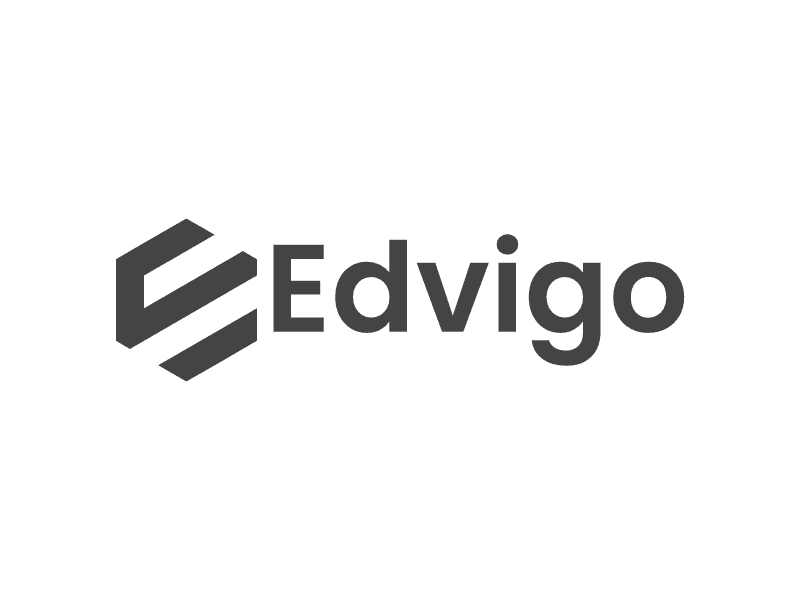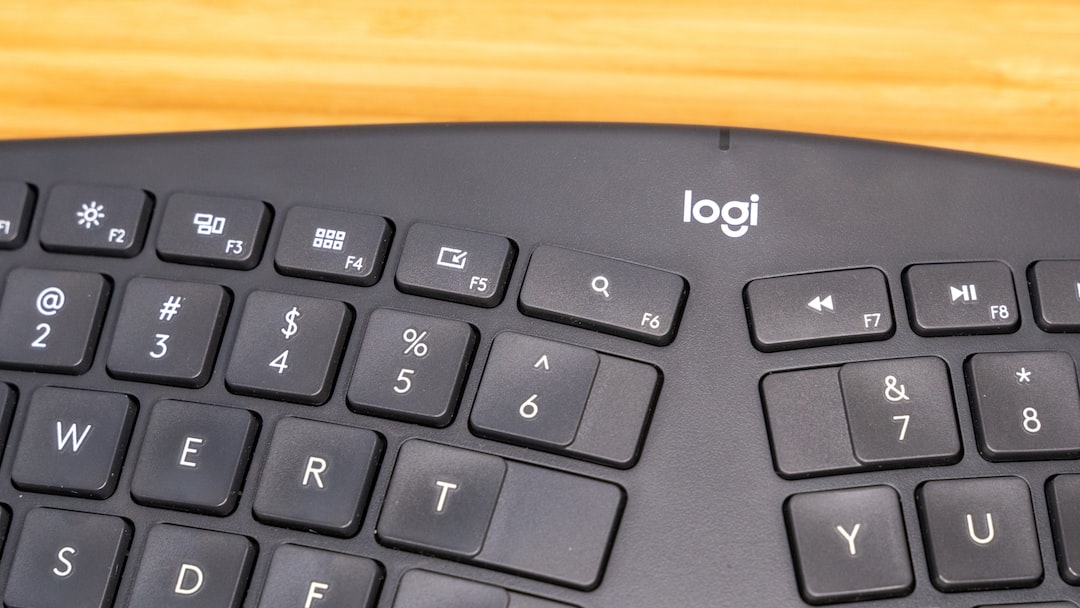Yo fam, let’s get one thing straight: designing for social media is a whole damn art form. 🖌️ You know those aesthetically pleasing IG feeds that you can’t help but scroll through? Or those super clean TikTok layouts that leave you double-tapping faster than you can say “mood”? Yeah, that didn’t just happen by accident. There’s a method to the madness, and you’re about to dive into it. Whether you’re the next social media mogul or just tryna make your feed look a little less chaotic, understanding design principles for socials is life-changing. Let’s forget the basics and get into advanced vibes here—because if anyone’s gonna make social media their playground, it’s gonna be Gen-Z. Let’s roll.
The Power of Consistency
Consistency is key in social media design. It’s like the drip that keeps your fit lookin’ fresh each day—except instead of clothes, you’re styling your feed. Imagine walking into a store with every single wall painted a different color. Kinda overwhelming, right? The same goes for social feeds that don’t have a consistent vibe. When your followers scroll through your Instagram or TikTok, they should be able to recognize your posts immediately without checking your handle. Colors, fonts, and even the type of content should align like your favorite playlist. When your personality shines consistently across all posts, it’s easier for followers to connect with your brand on a deeper, emotional level. Do it right, and you’ll have people vibing with you in no time.
Know Your Audience
Straight up, not knowing your audience is like going to a vegan bakery and asking for a bacon sandwich. It’s not just out of place; it’s completely missed the mark. Knowing your audience doesn’t just mean you gotta think like them—it means you need to understand their needs, wants, and their pain points like they’re your own. Gen-Z wants different things than Millennials or Boomers, so you better hit that spot right. For instance, TikTok users might vibe with snappy, meme-filled content, whereas Instagram users might lean more toward aesthetic visuals and short, meaningful captions. Different strokes for different folks, ya know? Research who you’re trying to reach and design for them, not for you. This way, your content will not only be seen but will also resonate, making your audience feel like, “Hey, this person gets me.”
The Magic of Color Psychology
Colors aren’t just colors, fam. They’re a whole vibe. Color psychology is the study of hues as a determinant of human behavior. It’s why McDonald’s uses yellow to make you feel happy AF and red to make you feel hungry. The color schemes you choose should reflect your brand’s personality and should evoke the right emotions in your audience. For instance, if you’re running an account for a wellness brand, you might lean heavily on greens and blues as they’re calming and peaceful. But if you’re pushing a hype music festival, you might want to go for bold, vibrant colors like red, orange, and neon vibes to get people pumped. It’s wild how much a little color can set the tone. Use this to your advantage to manipulate the mood of your content.
Typography — The Unspoken Hero
Never underestimate the power of good typography. A font isn’t just a way to deliver text; it’s a design element that can elevate your entire brand. Think of typography as the Kanye of your design—controversial, but undeniably effective when used right. Some fonts scream authority (looking at you, serif fonts), while others are more playful and chill (sans-serif, you’re up). The key is to find a typeface that matches the energy you want your brand to exude. And don’t forget readability. Yeah, that gorgeous, handwritten cursive font looks dope for an invitation, but on a small-screen device, it might come across as gibberish. Stick to one or two fonts within your posts or branding assets to ensure everything ties together seamlessly. Keep it clean, keep it legible, and keep it consistent. Typography can be a game-changer when done right.
Balancing Text and Visuals
Fam, designing isn’t just about putting pretty pictures on the internet—there’s an art to balancing text and visuals. Too much text can make your posts look like a whole-ass essay, while too many visuals can make the message get lost in translation. The yin and yang of text and images is where the real magic happens. Let’s dive deeper:
When you’re crafting a post, think about what purpose the text and imagery are serving. Are they working together or are they fighting each other for attention? Text should only be used to emphasize the key message you’re trying to deliver. Whether it’s in a meme, a quote, or even a simple caption. The images are there to catch the eye; the text completes the thought. This becomes crucial when we talk about how visual-heavy platforms like Instagram or Pinterest function. Instagram Stories, for example, are golden opportunities to marry short-form text with engaging visuals. Aesthetic overkill never impresses—balance does.
Animation and Movement — Level Up Your Game
Static images? Nah fam, that was so 2015. If you’re not incorporating some form of animation or movement into your designs, you’re already falling behind. Think about it: social media users have the attention span of a goldfish. You gotta grab their attention fast and hold on to it. GIFs, stickers, videos, boomerangs, and scroll-stop animations are where it’s at. Adding movement not only makes your post stand out in a sea of static content, but it can also be a more effective way to communicate. A simple animation can explain complex ideas in seconds, far better than a block of text ever could. And no, you don’t need to go full Pixar to make this work—a simple looping animation or a flicker of your brand’s logo will do the trick. It’s the spice you need, and it’s what makes your digital dish something followers can’t resist.
The Rule of Thirds and Grid Layouts
Okay, real talk: if you’re not using the Rule of Thirds or Grid Layouts in your design, you’re leaving money on the table. The Rule of Thirds is one of the oldest tricks in the book, but it’s still super relevant, especially in the digital age. It’s essentially a compositional guideline that suggests dividing your design into nine equal parts by two equally spaced horizontal and vertical lines. The idea is that by placing the elements along these lines or their intersections, you create a more balanced, engaging layout.
Meanwhile, grid layouts are life for those who are obsessed with symmetry and alignment. When everything falls in place on a grid, it just looks right—like when your selfie matches your aesthetic perfectly. You can use grid layouts to plan your content feed in advance or even for storytelling in carousels. Trust me, even if people don’t consciously notice these things, they’ll appreciate the balanced vibe you’re giving off.
Clickbait? No Thanks. Enter Value Proposition.
Let’s put this out there: clickbait is dead. Gen-Z ain’t falling for those "You Won’t Believe What Happened Next" headlines. We’re too woke for that. Instead, what you need is a strong value proposition in your designs. What’s in it for your audience? A value proposition is basically your promise of value to be delivered, communicated, and acknowledged. It’s why someone should engage with your post and hit that follow button. The key here is to lay it out clearly and honestly. Whether you’re delivering entertainment, education, or inspiration, make sure it’s visually communicated through your design. The vibe must scream, “This is worth your time,” without having to say it outright. Your designs should show your follower what they’ll gain, whether it’s aesthetic inspiration or actual knowledge. Now that’s how you get people to invest in your content.
Embracing Negative Space
You ever heard of less is more? Negative space is that vibe. It’s the empty space around and between the subjects of an image. When used correctly, it can elevate your design by making it cleaner, more modern, and more digestible. Instead of cramming all your elements into every inch of the canvas, let those visuals breathe! For example, give your text enough room to sit aesthetically on your image. Don’t suffocate it with embellishments or other design elements that aren’t serving any real purpose. Sometimes, letting a singular element—like your logo, a piece of art, or a statement—have some breathing room can make it stand out all the more. Using negative space isn’t about “what’s missing,” but instead about “what’s powerful.” It gives your design structure and lets it communicate more effectively, kinda like how a pause can be as impactful as the beat in a killer song.
Emotional Design
Fam, if you’re not tugging at the heartstrings, you’re missing a big opportunity. Emotional Design isn’t just about having pretty colors or smart layouts—it’s about creating content that resonates on a deeper level. You wanna make people feel something. When you nail this, your followers don’t just scroll past; they stop, engage, and maybe even share. That’s the dream, right?
Consider this: the design elements—color, typography, layout, etc.—should all work in unison to evoke an emotion. Whether it’s excitement, nostalgia, happiness, empowerment, or even a lil’ bit of FOMO, emotional design is what keeps people coming back for more. It’s why certain campaigns go viral; they connect with people on a human level. Always ask yourself, “What do I want my audience to feel when they see this?” Then craft your design around that. It takes your content from good to unforgettable.
Leveraging User-Generated Content
User-generated content (UGC) is like that hidden gem that everyone wants to find, yet not many tap into it effectively. Here’s the tea: UGC adds authenticity to your branding like nothing else. When people see real customers or users vibing with your product or service, they’re more likely to trust you and interact. Why? Cuz it’s not coming from the brand itself—it’s coming from people just like them. Highlighting UGC in your design boosts your relatability and builds community. This isn’t just about slapping a customer’s photo on your IG feed; it’s about integrating their content seamlessly into your design language. Whether it’s through simple reposts, themed competitions, or design integrations, UGC gives your brand a real, lived-in vibe that’s hard to beat.
Cross-Platform Design Consistency
Yo, you ever follow someone on IG and then see their Twitter, and it feels like you’re on a completely different planet? That’s a big no-no. Consistency across platforms is hella important. Whether someone is seeing your content on Instagram, Twitter, TikTok, or wherever, they should instantly know it’s you. Think of each platform like different rooms in the same house—each one might vibe a little differently, but overall, they should feel like part of the same home. Keep your color palettes, typography, and general design elements the same across platforms to build a cohesive brand identity. This way, there’s no confusion for your audience. They can follow you from one platform to another without any jarring changes in aesthetic or tone. It’s all connected, and each design should reflect that. Trust me, it’s worth the extra effort.
Impact of Vertical Video
Let’s not kid ourselves: vertical video has taken over. Whether it’s Instagram Stories, TikTok, or Reels, vertical is where all the eyes are at. Why? Because it’s natural to how we use our phones. People aren’t flipping their phones to watch content anymore—ain’t nobody got time for that. Designers need to adapt to this by optimizing content for vertical formats. This includes everything from IGTV templates to vertical ad placements. The beauty of vertical video goes beyond just orientation; it’s about fully utilizing the space, knowing where to place text, logos, and key messages. It can make a world of difference in engagement rates. Embrace vertical like it’s your calling because it basically is in 2023.
The Power of Short-Form Content
Let’s be real here: Gen-Z has a legit aversion to long-form content on social media. If it ain’t quick, it’s out. This is why short-form content is ruling the scene, and it’s more than just a trend—it’s a necessity. Your designs need to accompany this fast-paced format by being snappy and visually compelling. Think short Reels, TikToks, and Twitter graphics with powerful, punchy impact. It’s about hitting the point and doing it fast before that thumb starts scrolling. Minimalism works wonders here. Take your message, strip it down to the most necessary elements, and convey it in a way that leaves an instantaneous impact. Short-form content is like the espresso shot of social media—a quick hit, but it leaves you buzzing. So, craft your designs to serve up that energy in every scroll.
Storytelling Through Design
Alright, let’s get meta for a sec—think of each post you create as a chapter in an ongoing narrative. The idea of telling stories through design isn’t new, but it’s something that never goes out of style. Every design element you incorporate—colors, typography, imagery—should have a purpose within the story you’re telling. Maybe it’s showcasing a day in the life, a product’s journey from concept to shelf, or even a customer’s transformation story. A good design doesn’t just throw random elements together; it ties them all into a cohesive narrative that’s both engaging and visually compelling. You can do this through carousels, video edits, or even a series of posts connected by a consistent theme or style. It’s all about keeping your audience hooked, much like a binge-worthy Netflix series, but with cooler graphics.
Influencer Collaborations and Co-Creation
Let’s talk about the cheat codes of social media success—collabs. When you collab with influencers, you’re basically merging digital DNA to create content that resonates across audiences. But it’s not enough just to throw an influencer’s face on your design and call it a day. You need to amplify both brands’ identities while creating something new and original. Co-creating with influencers allows you to tap into their design language and merge it with yours, creating something fresh and exciting. Think hybrid vibes—where both your aesthetic and theirs are equally represented in the design. This is especially fruitful when you’re looking to cross-pollinate audiences. Plus, when a piece of content is the joint effort of your brand and an influencer, it comes with an extra layer of authenticity.
Incorporating Accessibility
Yo, inclusivity isn’t just a trend; it’s a responsibility. When you’re designing for social media, you’ve got to consider how accessible your content is to everyone. This means making designs that are ADA-compliant, providing alt texts for images, using captions for videos, and ensuring that your color choices aren’t alienating people with color blindness. A well-rounded design isn’t just pretty; it’s functional for everyone. For instance, avoid using low-contrast text and background colors, because not everyone can easily read that. Tools and resources are out there to help you make your content more inclusive—so no excuses. Being woke means being inclusive too, and if your design isn’t accessible, you’re just straight-up losing out on a wider audience.
Crafting Engaging Call to Actions
A dope design means nothing if it doesn’t lead your audience somewhere. That’s where Call to Actions (CTAs) come in. A CTA is essentially your closing line, your mic-drop moment. Whether it’s a “Swipe Up to Shop” on IG or a “Tap link in bio” prompt, CTAs should be integrated into your design effortlessly. But there’s an art to it—it should be both eye-catching and unobtrusive. If it feels forced, your audience is more likely to ignore it. Use dynamic visuals or subtle animations to draw attention without being too over-the-top. The tone of the CTA should match your brand’s voice—whether it’s playful, serious, or somewhere in between. It’s what gets your audience to do what you want them to do, so don’t sleep on it.
Algorithm Awareness — Design with the Algorithm in Mind
Okay, okay, we all love to hate social media algorithms, but the truth is they’re an unavoidable part of your design strategy. Social platforms prioritize different types of content, which means you should too. For example, TikTok algorithms favor high-engagement posts, so include elements in your design that encourage comments and shares. Instagram Reels often prioritize trendy filters, so consider that when editing your videos. Twitter gives visual content higher visibility, so include well-balanced imagery or infographics in your tweets. Understanding how content is sorted and served by these algorithms allows you to design in a way that increases your chances of being seen. Don’t rely solely on organic reach—design for the algorithm as much as you design for your audience.
Understanding Analytics to Enhance Design
Let’s be real, design isn’t just a creative endeavor—it’s backed by data. Your analytics can tell you a lot about what’s working and what’s not. Knowing how to read and interpret metrics like engagement rates, click-through rates, and more can help guide your design decisions. Say you notice your audience is more responsive to a particular color scheme or type of post—that’s your cue to double down and refine that strategy. Likewise, if something isn’t resonating, switch it up or ditch it entirely. Use A/B testing to see which designs get better traction and pivot accordingly. This constant feedback loop between design and analytics is what will set you apart from just another visual artist on social media to a legit content strategist.
Social Media Design Trends You Need to Know
Look, social media design is ever-evolving—it’s like fashion; what’s in today might be out tomorrow. Being up-to-date on the latest trends is non-negotiable. Trends like dark mode design, minimalistic approaches, or even chaotic maximalism have all passed through the pipeline in recent times. Then there’s the resurgence of 3D elements, retro fonts, and grainy textures giving off serious nostalgia vibes. But while it’s important to stay current, don’t lose your sense of originality. Trends should guide and inspire your designs, but what will keep you distinguished in the crowded space is your unique twist on them. This keeps your content from feeling dated while still being in tune with what’s resonating on the wider scope of social media.
The Glow-Up: Transforming Your Amateur Social Media into a Pro-Level Feed
If you’re looking at your feed and it’s not giving main character energy, it might be time for a glow-up. The good news? You don’t have to be a pro designer to achieve a lit social media presence. All it takes is leveraging some key elements we’ve discussed, from mastering your color scheme, typography, and grid layout to embracing negative space and user-generated content.
Here’s how to kickstart your glow-up journey:
-
Audit your Current Content: Take a hard look at what you’re working with. What’s popping off, and what’s meh? Be brutally honest with yourself.
-
Revamp your Aesthetic: Decide on a consistent theme—color palette, filters, even emojis. It’s like giving your feed a cohesive wardrobe.
-
Start Using More Design Tools: Ain’t nobody gonna blame you for not knowing Photoshop. Canva and other design tools are basically cheat codes for upping your design game. Use them.
-
Begin A/B Testing Your Content: Experiment with different designs and content strategies to see what makes people double-tap.
-
Don’t Forget CTA’s: Whether it’s “Follow for More” or “Link in Bio,” always end with a solid CTA. No stragglers—get that engagement flowing.
Each step you take brings you closer to that aesthetic, pro-level look that makes people instantly recognize your brand. Keep leveling up.
FAQ Section: All Your Burning Questions Answered
OK, I can almost hear your questions buzzing through the screen, so let’s tackle some FAQs that’ll help you design like a pro, whether you’re just getting started or looking to fine-tune your vibe.
1. How important is color in social media design?
Color is everything, fam. It’s the mood-setter, the vibe-maker. Colors evoke emotions and can influence how your audience perceives your brand. Think of your color scheme as your brand’s personality—it should reflect what you stand for and who you want to attract. Don’t just pick colors because they’re trendy; choose them because they represent your brand’s core identity.
2. Can I use the same design across all social media platforms?
You can, but you probably shouldn’t. Every platform has its own unique flavor, and what works on Instagram might flop on LinkedIn. While keeping your branding consistent, adapt your designs to platform-specific formats and tones. Customize your design for each platform while maintaining a unified brand identity. Basically, think of it like dressing for the occasion—same style, different fits.
3. Do I need expensive design tools to create good social media posts?
Nah fam, you don’t. Tools like Canva, Adobe Spark, or even some mobile apps are more than enough to get you started. They offer templates, icons, and customizable color palettes that can help you create professional-level designs without needing to drop cash on expensive software. Plus, a lot of these tools have free versions that pack plenty of punch. Creativity is key, not the price tag of your tools.
4. Why is everyone so obsessed with vertical video formats?
Because that’s where the game is at right now. Vertical videos align with how people naturally hold and interact with their phones. Platforms like TikTok, IG Stories, and Reels have embraced this format, and it’s become the go-to way of consuming content. If you’re not designing for vertical, you’re basically designing for last year—and who wants that?
5. How can I make my designs more accessible?
Making your designs more accessible is all about inclusivity. Use high-contrast colors for text, add captions to videos, and provide alternative text for images. Consider everyone’s experience, including those with visual impairments or hearing difficulties. This not only broadens your audience but also shows that your brand values all individuals equally. Accessibility isn’t just nice to have; it’s a must.
6. What’s the deal with user-generated content? Do I really need it?
UGC is your shortcut to authenticity. People trust other people more than they do brands. Featuring UGC on your feed instantly makes you more relatable and trustworthy. It also allows your fanbase to see themselves represented in your brand’s narrative. So yeah, UGC is kinda essential, especially if you want to build a strong community around your brand.
7. Can I post the same content on different platforms on the same day?
You can, but be strategic about it. Timing matters. Different platforms have different peak engagement times, and posting the same content at the same time across all channels may not optimize your reach. Also, consider tweaking the design and message to better suit each platform’s audience while maintaining consistency in your overall branding. Stagger your content release based on the platform and its audience for maximum impact.
8. How do I know if my design is working?
The numbers don’t lie. Keep an eye on your analytics—engagement rates, likes, comments, shares, click-through rates. These metrics will tell you what’s resonating with your audience. If something isn’t working, don’t be afraid to adapt and switch things up. A/B test different designs to see what gets more engagement; rinse and repeat. Remember, design isn’t static—it evolves along with your audience.
Closing Thoughts: It’s a Vibe
Designing for social media platforms is a full-on journey, and just when you think you’ve nailed it, the trends shift—again. That’s part of the fun. But no matter where the trends go, the basics stay the same: consistency, emotional connection, understanding your audience, and staying authentic. Whether you’re here to make your feed aesthetically on-point or you’re planning on going viral with your next piece of content, having a solid design game is your ticket. So, what are you waiting for? Plot, design, post, and watch the magic happen. Remember, in the world of social media design, you’re only as good as your last post, so keep leveling up, and never stop evolving. You got this. ✌️
Sources and References:
- AIGA Design Principles: aiga.org
- The Psychology of Color in Design by Canva: canva.com
- Social Media Trends and Tools by HubSpot: hubspot.com
- Accessible Design Practices by W3C: w3.org
- Vertical Video Production by Wistia: wistia.com
And there you have it. If you’re serious about elevating your social media game and engaging your audience like the GOATs, then design isn’t just an option—it’s a commitment. Now go out there and create content that’s straight fire. 🔥




